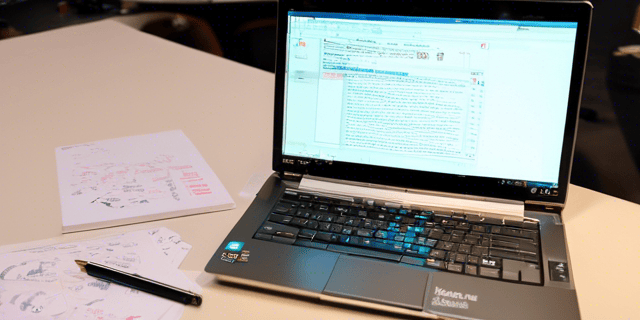In the digitally driven workplace of today, communication and collaboration are paramount. Understanding and managing the relationships within your organization is vital for ensuring that your team works together effectively. A great tool for visualizing and managing these connections is relationship mapping software . Keep reading to learn more about how such software can enhance your organization.
Understanding the Basics of Relationship Mapping Software

Firstly, let's discuss what relationship mapping software exactly is. This technology tool helps visualize and understand relationships among the various elements within an organization. It can range from mapping relationships between team members to tracking relationships with customers or clients.
Many businesses and organizations use relationship mapping tools to identify gaps in communication, ensuring that all necessary collaborations are running smoothly. Plus, it empowers decision-makers with comprehensive data to make informed strategies.
Different types of relationship mapping software can serve different types of needs, organizational, project-based, and client-focused, with their own unique range of features. Regardless of the specific use case, however, the goal is to enhance communication and foster collaboration.
Boundaryless communication and enhanced collaboration are especially critical in today's remote and hybrid work environments. The software helps create seamless workflows by visualizing inter-dependencies and addressing every pivotal connection.
How Relationship Mapping Software Enhances Communication
Communication stands as one of the key pillars of any successful organization. Using a relationship mapping tool can considerably streamline communication within the system. It showcases connections between teams, departments, roles, and resources at a glance to show where more communication may be needed.
Using such software also allows instant access to communication history, files, notes, and other relevant data, all in one shared space. It assists in eliminating information silos and redundant exchanges by providing central storage with accessible and updated features.
Additionally, relationship mapping tools offer capabilities like alerts and notifications. These can prompt team members when they need to communicate or take action based on project timelines or tasks. It represents an enhanced level of clarity in task allocation, improving communication .
The Role of Relationship Mapping Software in Driving Collaboration
Just as relationship mapping software bolsters communication, it also plays an indispensable role in driving collaboration. It visualizes the points of contact and areas of overlap between different teams, departments, or projects. This allows managers to identify areas where collaboration can be improved or new collaborative opportunities altogether.
By providing clear visibility of workflows and responsibilities, the software helps reduce potential bottlenecks in the collaborative process. It helps ensure tasks are assigned efficiently and that everyone on the team understands who they should be collaborating with.
Relationship mapping software also aids in tracking shared objectives and goals. It not only outlines the responsibilities of each team member but also highlights how these roles interact and support one another towards achieving project goals. It promotes a sense of shared accountability and enhances cooperation.
Making the Most of Relationship Mapping Software: Best Practices

Implementing relationship mapping software is just the beginning. Making the most of its potential requires understanding and applying some best practices. First and foremost, regular updates and data cleaning are essential to ensure that the information on the map is accurate and up-to-date.
Building an inclusive communication and collaboration culture is another critical practice. It nurtures a collaborative atmosphere where everyone feels comfortable contributing their ideas and expertise.
Clear and detailed labeling is another best practice. The clearer the information, the easier it will be for users to understand and use the map effectively.
Lastly, training all team members on how to use the software is crucial. The more comfortable everyone is with the software, the more effectively they will be able to use it for communication and collaboration.
Relationship mapping software is a significant asset in enhancing communication and fostering collaboration in any organization's dynamic structure. Visualizing relationships, bridging information gaps, and driving collaborations have the potential to revolutionize an organization’s productivity and success.




Leave a Comment on this Post